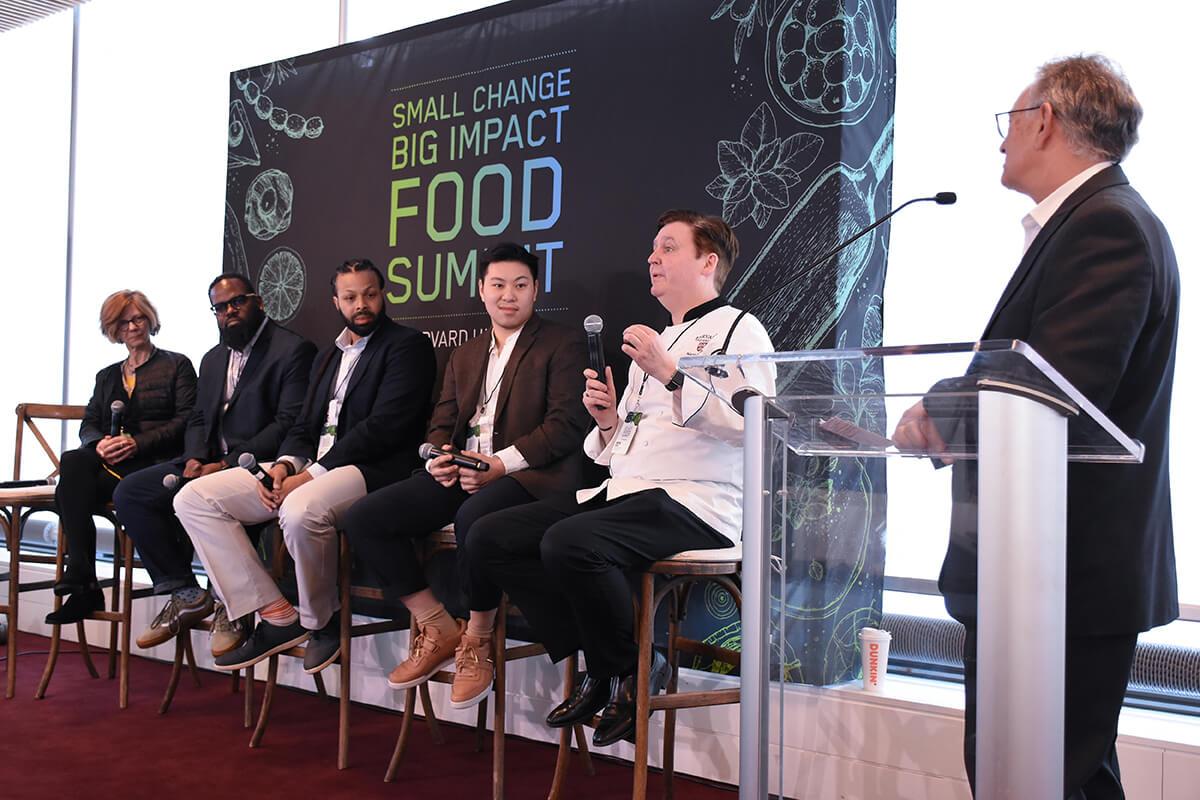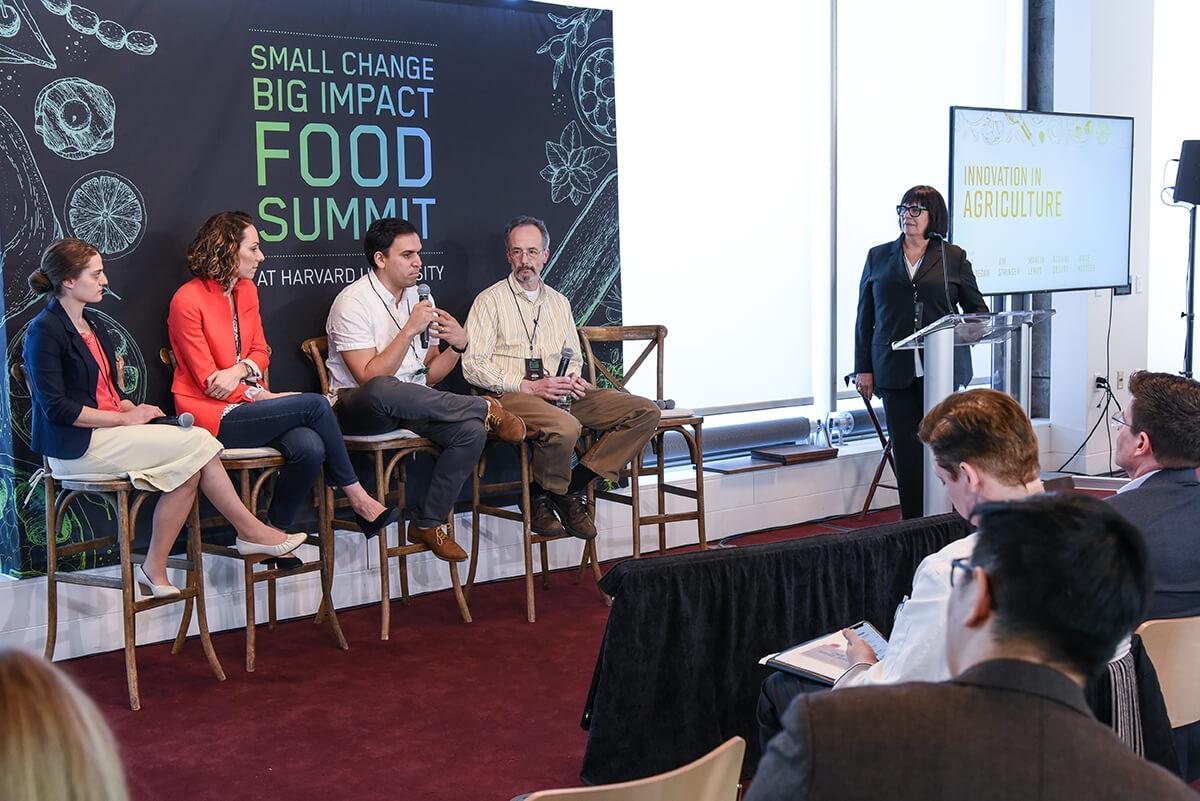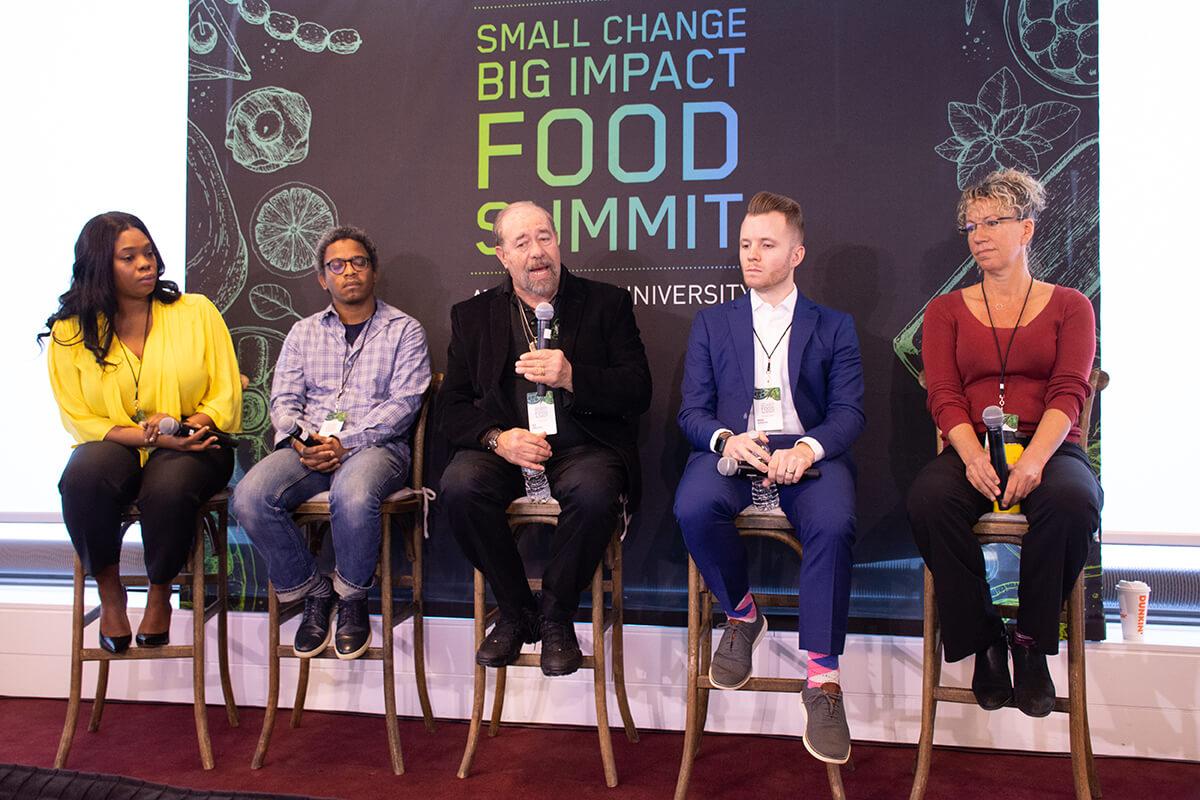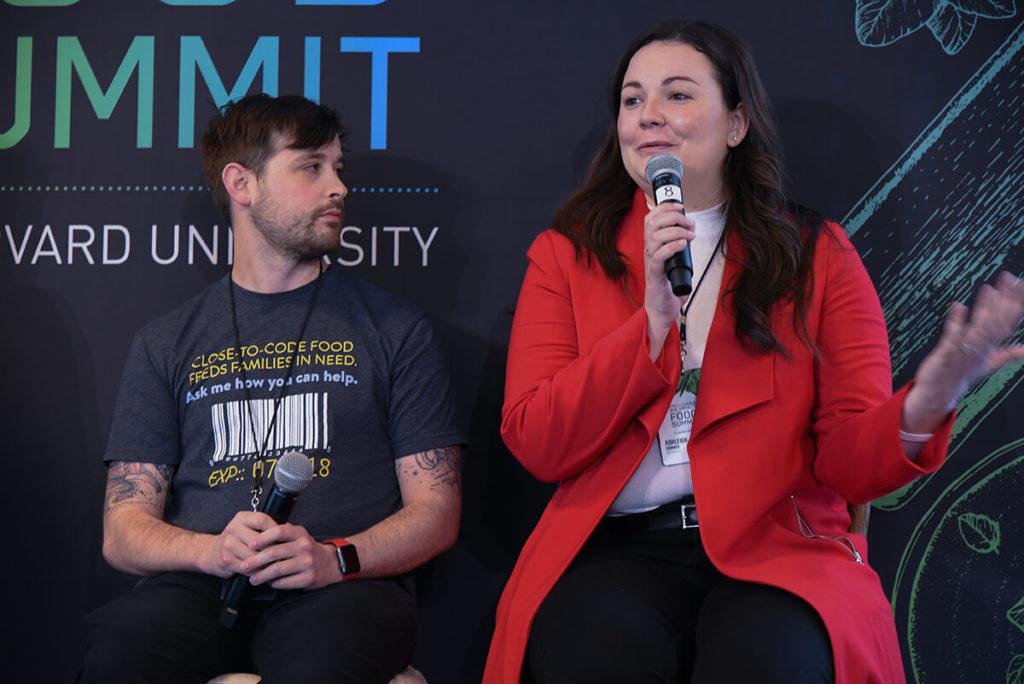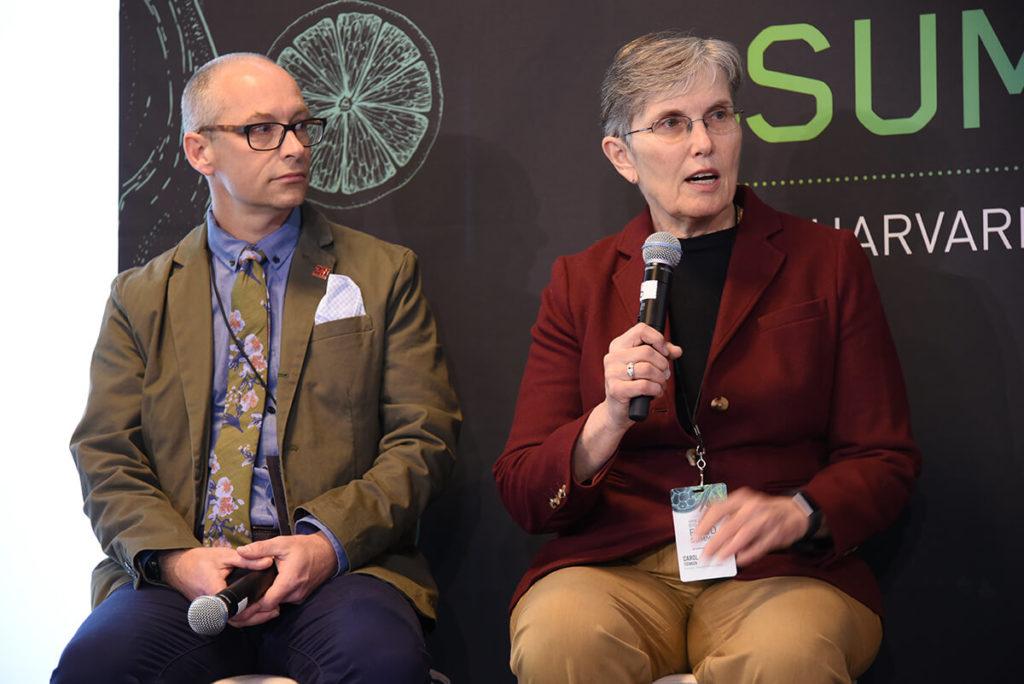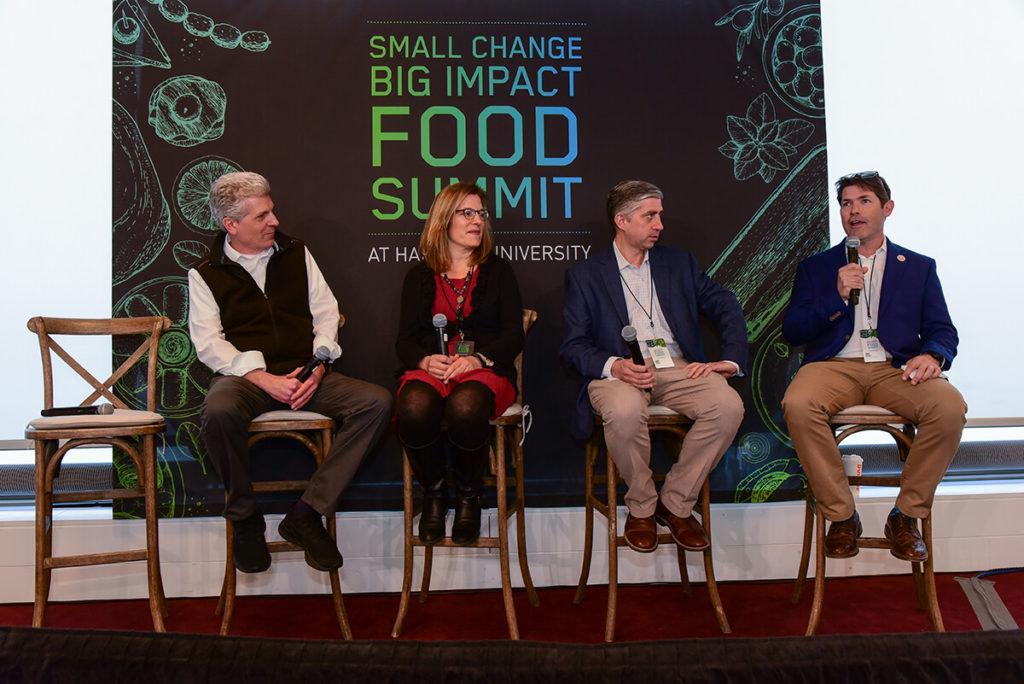Directions in Sustainability
Key takeaways from the inaugural Small Change, Big Impact Food Summit
Originally published in Inside Hormel Foods magazine
By Mary Ladd
Progressive ideas on sustainability came to the fore at the summit, presented in panel discussions by chefs, restaurant owners, nonprofit leaders, retail outlets, foodservice providers and globally recognized food brands.
Hormel Foods saw an opportunity for collaboration and shared thought leadership when approaching David Davidson, managing director of Harvard University Dining Services, to co-create this first-of-its-kind summit. The partnership: one of the largest and most admired food companies in the world teaming up with one of the most prestigious universities in the world — both steeped with knowledge, an innovative approach and a sense of responsibility to the greater food world. It was a match made in food heaven.
One of the driving ideas behind the summit: More can be accomplished by collaboration than by going it alone. Crista Martin, director for strategic initiatives and communications for Harvard University Dining Services, framed this idea of collaboration by asking her panelists, “What is the partnership that you need to forge to make a bigger impact?”
Through a series of panel topics curated by Hormel Foods partner agency Attention Span, food industry stakeholders shared ideas, plans and dreams to feed our world now and in the future, using seemingly small changes to make monumental differences.
It's the soil that matters
Convoy of Hope’s Jason Streubel, aka “Dr. Dirt,” made a stirring statement on the inseparability of food from soil.
“Because if [a nutrient] is not in the soil, it doesn’t get to the plant, and if it doesn’t get to the plant, it doesn’t get to the person.” Streubel said. “How is it that we can breathe in and out? It’s because of the nutrients that we have that allow us to be able to breathe in and survive and be nerdy scientists like me. But food is life. And ultimately that comes from the soil. So if you feed the soil, you feed the world. Food is soil, food is life.”
Farmers need to be part of the conversation
Applegate’s Gina Asoudegan opened her panel by acknowledging that although she attends many large conferences, this was the first time she has seen a farmer on the agenda. That’s surprising, she said. “There is no future of food without farmers, and it’s just so fundamental, but they’re not in many of the conversations.”
Jim Stringer, specialty buyer for Costa Fruit & Produce, said he’s seen how farmers are “some of the smartest people, [from] water usage to methods of conserving topsoil.” One area of focus getting increased attention: microorganisms within the soil. “We are just starting to understand how they improve the health of the soil, which improves the health of the plants, which increases productivity,” he said. “Everything is interconnected.”
Surely Dr. Dirt would approve. Another relevant point is that all of this costs money, and yet Americans in general probably spend the lowest percentage of their income on food, according to Stringer.
Regenerative agriculture & technology
Later, when asked for her perspective on the role of technology and how it can meet many of the challenges we face in the food system, Asoudegan spoke about her work with regenerative agriculture.
“Some would say regenerative agriculture is where different species are grown on the same farm,” she said. “It’s one of the most effective tools we have to sequester carbon.” Asoudegan also shared the ways that tech- nology serves to help these same farms that use regenerative practices, measuring soil health and biodiversity. This provides a financial carrot for farmers, because “They can see that the soil is healthier and there- fore more productive,” no doubt a strong business incentive.
Waste not...
Maureen Timmons, director of dining services at Northeastern University, explained the ways that composting remains a tool for menu planning and tackling food waste. Timmons checks Northeastern’s compost bins daily, because what has been composted offers clues to what her student- customers are eating and — more to the point — not eating. She speaks about waste daily with her staff and stakeholders. Having students learn about food waste gives them a skill and mindset that they can use in the “real world” after graduation.
Evolving ingredients & new standards
For fast-casual chains such as the ever-popular Shake Shack (which has international locations that include a mall in Dubai), menu ingredients have evolved. Jeffery Amoscato, vice president of supply chain and menu innovation, said its beef is now free of antibiotics and hormones, and its bread manufacturer now provides a line of non-GMO products, including non-GMO potato buns, a Shake Shack signature item. “We made sure that anywhere we opened globally, we’re adhering to the same standards.”
Costco was cited as an example of where customers who are willing to pay more for organic items will shop. Chef Dave Megenis said, “There is success for companies like Costco, who sell the most organic and non-GMO products in the country. There’s definitely demand.” Product managers may want to take notes at the possibilities that Costco’s vast consumer base presents.
Megenis continued, pointing out that the standards held by the specialty markets Whole Foods and Earth Fare have spread throughout the industry. “These companies have set a standard for certain ingredients and sub-ingredients that they allow in their stores. So companies are now saying, ‘Well, we follow the Whole Foods list.’”
Plant-based meat
The patterns of “flexitarians” who primar- ily eat plants but occasionally eat fish and/or meat are worth watching because this way of eating has become mainstream. Similarly, consumers may not fully embrace the flexi- tarian label but find they want to add more plants to their diets — that mindset is defined as “plant curious.” Data suggests that there are 80 million flexitarians.
For John Ghingo, it was something of an exciting pivot and leap to become the president of Applegate after working for big global brands such as Nabisco and Kraft Foods. That’s because Ghingo sees natural and organic food as a thrilling space with so much potential for action: “The change in the industry, the change for the food world is going to happen in the natural, organic, sustainable food space,” he said.
His imagination was similarly sparked by a visit to a regenerative farm, and he seemed to hope that the audience members will go home with a key takeaway no matter where they work and what they eat: “Get one step closer to where your food comes from.”
Hungry Planet achieved similar success when feeding 1 million students in Los Angeles and Santa Barbara, Calif., and there was not a single complaint from students, teachers and families. “The food was that good,” he said.
Fresh from an Innovator of the Year award as the director of dining services for Boston College — which is akin to winning an Emmy or Oscar, Beth Emery shared how she engages her customers on campus. She’s seen a major change recently in this work, as students take more of a peer-to-peer approach to impacting their food options. Their engagement helps her team greatly: “The more that I got the students involved in our strategic planning and our ideation, the more likely we were going to be able to implement. The key piece in the last five years in this space has been growing students’ interest in sustainability.”
From micro to macro
Jim Borel, a former executive vice president at DuPont, currently advises startups like Neogen, a “precision agriculture” company using data and analytics to help farmers make more efficient decisions.
“What’s happening in the microbiome will start to take shape in a way that will make animals healthier and reduce greenhouse gases and, in some cases, help with productivity, so you’ll get more protein per animal.” While Borel is involved with several companies in food science and biotech, there is a unifying theme to his interests — applying technology to answer a very big question: “How do we sustainably nourish a growing population?”

